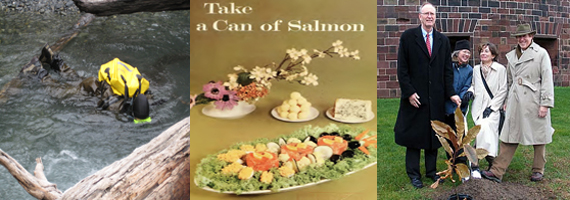But, as most of us know, it’s really about the food.
Well before training center smorgasbords, decades before regional office clambakes and central office holiday spreads, food played a central role in the life of the Fish and Wildlife Service.
It has something to do with being an agency populated by hunters and anglers who shoot, spear, trap, fish, net, seine, or otherwise “reduce to possession” the fowl of the air and the fins of the sea. We simply recognize the importance of conservation of animals and plants to people…and that part of the value in their preservation consists of, well, eating them. more




